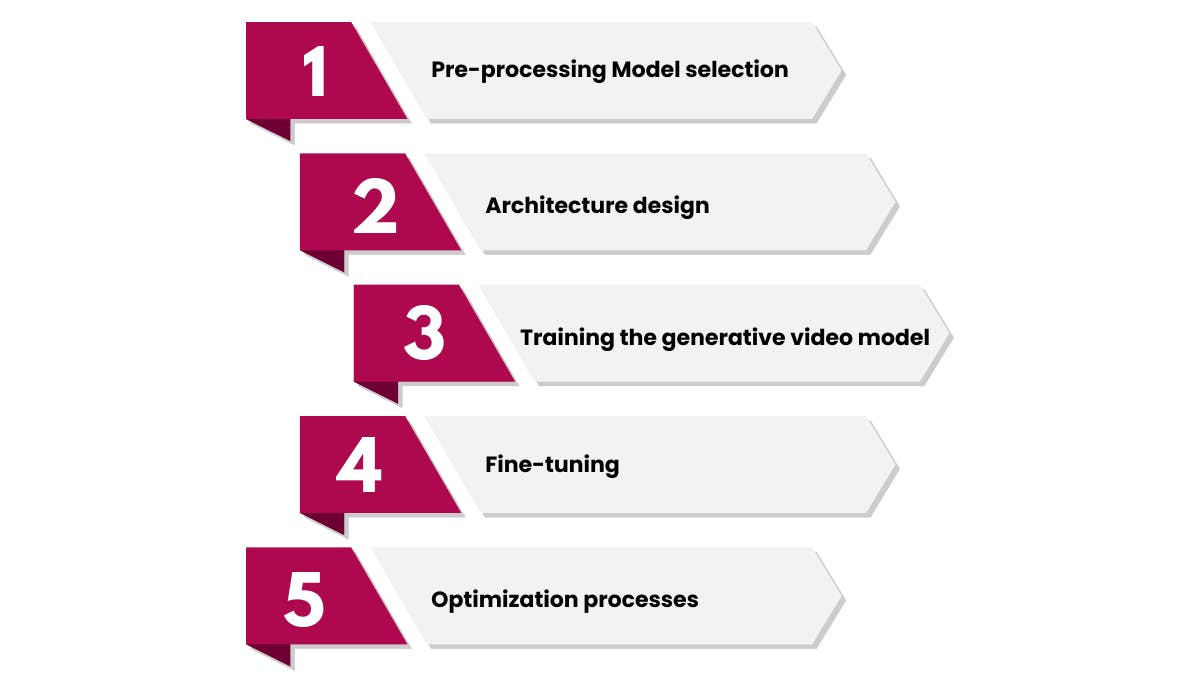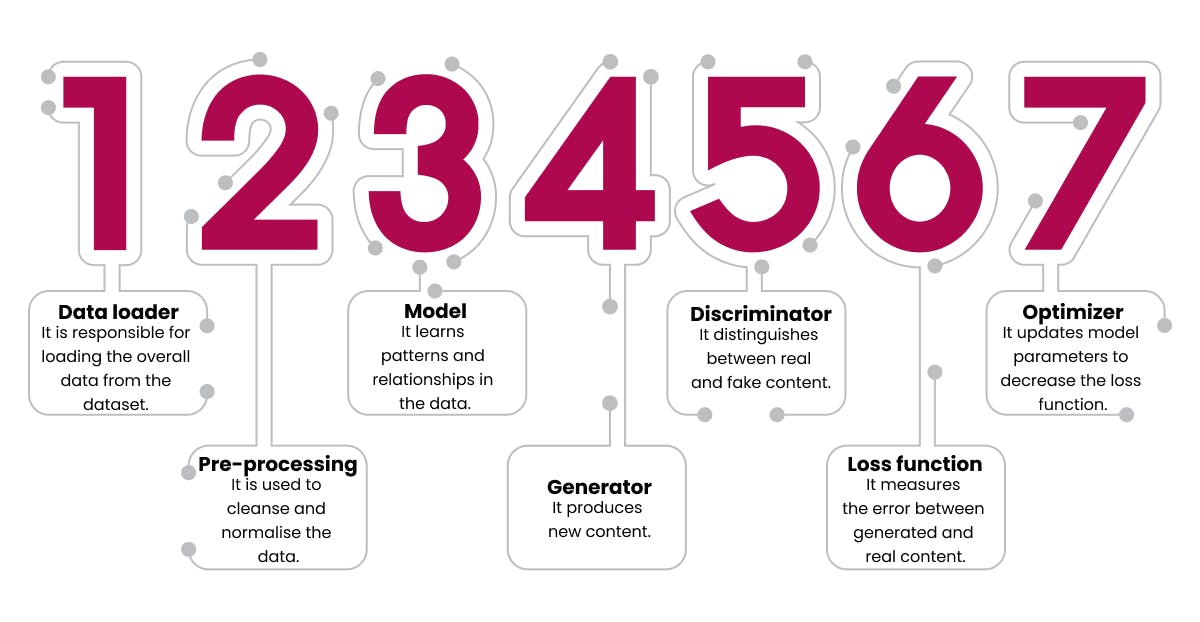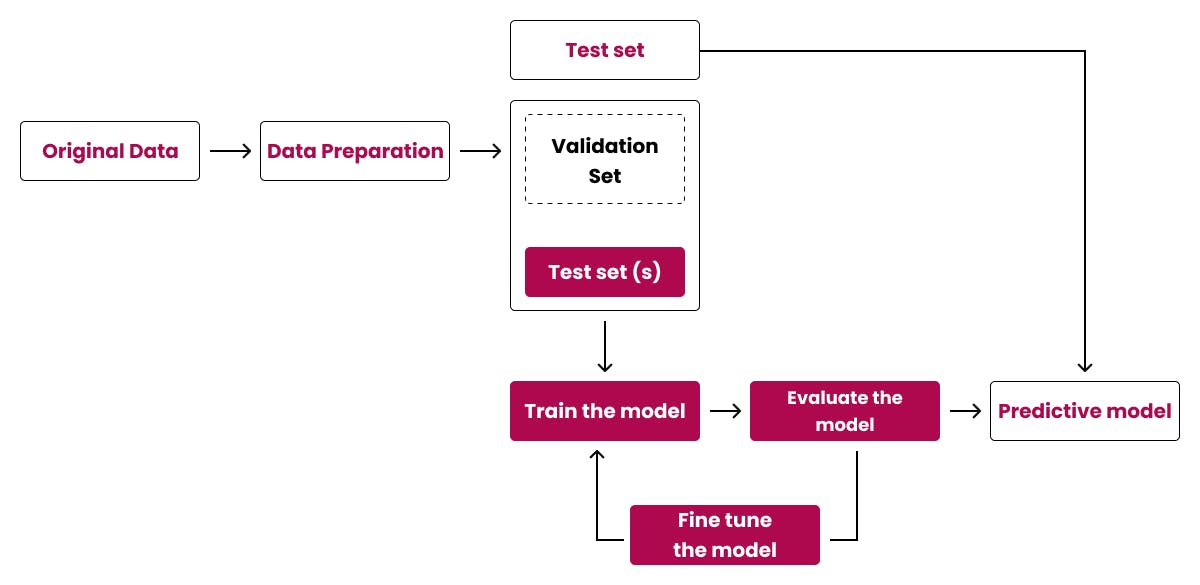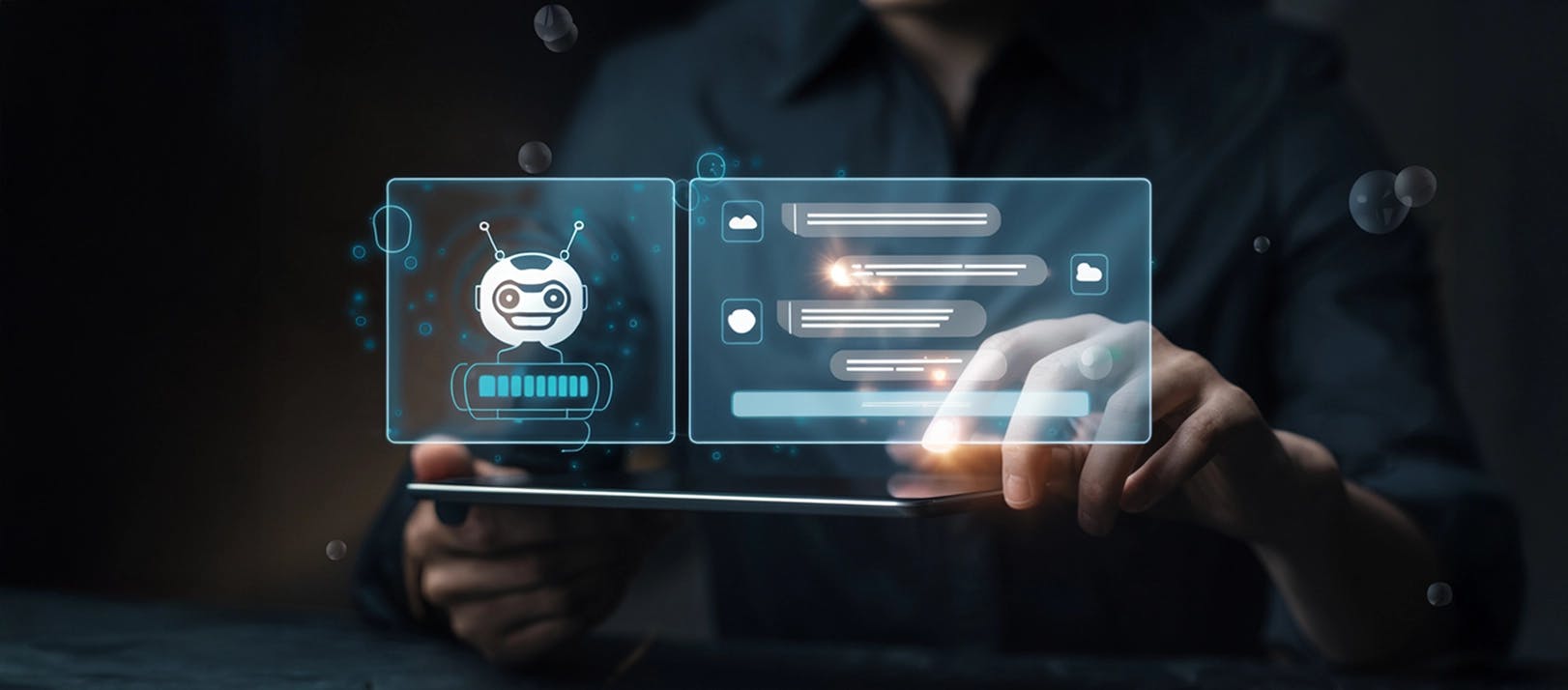
,
The creation of a generative video model allows for the successful generation of novel and realistic video sequences. It brings a new ray of opportunities in different applications like content creation, video synthesis, and creative storytelling. As a beginner to the generative AI video models, you have to know the basics and make an informed decision to efficiently use it.
What are Generative AI Video Models?
The generative AI is designed to generate content like ai audio, ai text, ai images, and other ai media as per the prompts given to it. The main objective of the generative AI is to give new data replicating the complete training dataset which is used to train the machine learning model.
The role of the training data is to acquire the essential knowledge of patterns and the predictive capabilities needed for their chosen tasks in the development of artificial intelligence software.
Generative video models are machine learning algorithms. The video data is artificially created the same as the original video as per how the models let us learn the underlying structure of the video data.

Types of Generative AI Video Models
There are so many types of generative AI video models. However, some of the most popular generative models are as follows.
1.Generative Adversarial Networks
Generative Adversarial Networks are based on the two-part model where the first part is the generator. This generator is used to generate fat data. The second part is the discriminator which evaluates the authenticity of the fake data. The main objective of the generator is to produce fake data and convince the discriminator that it cannot tell the complete difference between real and fake data.
2.Stable Diffusion Models
Stable Diffusion Models are known as flow-based generative models. They are designed to transform the simple random noise into structured and complex data. They define a series of very simple transformations known as flows to gradually change the random noise into the desired content.

3.Autoregressive Models
Autoregressive models make data one piece at a time. They generate one word in a sentence at a time. They predict the next piece of data as per the previous pieces.
4.Variational Autoencoders
Variational Autoencoders successfully work by encoding the complete training data into the low-dimensional representation and decoding this latent code back to the original data space for generating the new data. The goal of this generative video model is to find the best latent code for generating the data same as the original data.
Steps to Create a Generative Video Model Data Collection
Everyone with an expectation to reap benefits from the efficient use of generative AI video models has to know how to create a good generative video model data collection first.

1. Pre-processing Model selection
Many users of the advanced tools associated with automatic video generation can create a generative video model data collection. It acquires a large collection of video dataset that represents the genre of videos they wish to generate.
They must eliminate noisy and irrelevant videos to pre-process and clean the video dataset. They have to ensure that they have high-quality and relevant videos. They can split the video dataset into validation and training sets for the evaluation and training of the model.
2. Architecture Design
You have to select appropriate generative model architecture for video generation, especially generative adversarial networks, variation autoencoders, and other things. Variational autoencoders are generative models with the capability to learn a latent representation of videos and make new video sequences using the sampling from the learned latent space.
Generative adversarial networks are models made of a generator and discriminator competing against each other to generate realistic videos. Recurrent neural networks are models capturing the temporal dependencies in videos and making sequences as per the learned patterns. Conditional generative models are the models generating videos conditioned on particular input information.
3. Training the Generative Video Model
In this step, you have to define the architecture and hyperparameters of the chosen generative model. You can train the model using the best and most prepared video dataset. You must optimise it to generate realistic and diverse video sequences. You can enhance your method to regularly evaluate the performance of the model using the validation set which is designed to monitor its progress.
4. Fine-Tuning
You have to fine-tune or refine the generated video sequences to improve the quality and coherence if required. You can apply any needed post-processing methods, especially stabilisation, noise reduction, and color correction.
5. Optimization Processes
The optimization processes involve so many important things to enhance every aspect of the final output. You can assess the generated videos based on different metrics like realism, visual quality, and diversity. You have to gather feedback from all users or domain specialists to assess the usefulness and effectiveness of the generative video model. You can iterate on the video model and make essential enhancements as per the evaluation results and feedback.
Key Components of Generative AI Video Models
The main components of AI video generative systems do outstanding things as follows.

What Tasks Can a Generative Video Model Perform?
Generative video models are the best computational models. They are designed to make video sequences with realistic and novel content. They use techniques, especially deep learning to learn from existing video content and make new videos resembling the characteristics of the training data.
The following tasks are performed by a generative video model.
- Video Synthesis
Generative video models are used to make new video frames to complete a sequence that has been partially finished. It is useful to make new video footage from still photographs and replace the missing frames in a damaged video. - Video Style Transfer
A generative video model is used to transfer one video style to another using innovation and distinctive visual effects. For example, the best artwork could be applied to improve the distinctiveness of the video. - Video Compression
Generative video models can be properly applied to video compression. It involves encoding the actual video into a low-dimensional representation and decoding it to produce a synthetic video. This process makes it possible to compress the complete video files devoid of compromising the quality. - Video super-resolution
Generative video models can make poor-quality videos seem detailed and sharp by maximising their resolution. - Video prediction
Generative video models can be implemented for forecasting the next frames in the video to do real-time video prediction tasks especially security monitoring and autonomous driving. They can interpret the currently playing video data and make the next frames as per the patterns and associations discovered from the training dataset.
Data Preparation for Training Video Models
You may be a beginner to the video dataset and think about how to get the best data preparation on time. You have to acquire a diverse video dataset representing the type of videos you need to generate. You have to pre-process and clean the overall dataset by properly eliminating irrelevant and noisy videos. You must make certain that data is quality and relevant at first. This is advisable to split the dataset into training and validation sets for the complete model training and assessment.

Architecture of Generative Video Models
Selecting the appropriate generative model architecture for the video generation is very important. The following details explain the generative model architectures.
- Variational Autoencoders
Variational autoencoders are generative models that learn a latent representation of the overall videos and make new video sequences by sampling from the learned latent space. - Generative Adversarial Networks
Generative adversarial networks are models composed of a generator and a discriminator that compete against each other to generate realistic videos. - Recurrent Neural Networks
Recurrent neural networks are models that capture temporal dependencies in videos and make sequences as per the learned patterns. - Conditional Generative Models
These models generate videos conditioned on particular attributes or input information. This is worthwhile to consider very important factors like the complexity, computational resources, and specific requirements of your project.
Advantages of Generative Video Models
Generative AI can be applied across different areas of the business. It has the best stuff to interpret and understand existing video content and make new video content. It improves the existing workflows.
Many people worldwide take advantage of this modern technology to achieve their goals efficiently. The integration of such advancements lays the groundwork for future innovations in AGI (Artificial General Intelligence), pushing boundaries in automation and creativity. The following details outline the key benefits of implementing generative AI video models:
- Automating the manual content writing process.
- Reduce the overall effort of responding to emails.
- Improve the response to particular technical queries.
- Create realistic representations of people.
- Summarise the complex information into a coherent narrative.
- Simplify the process of making content in a specific style.
Generative AI video model has more benefits than conventional techniques. The following details explain some of these benefits.
- Efficiency
Generative video models can be successfully taught on the biggest datasets of videos and images for producing new videos as efficiently and quickly as possible in real-time. If you wish to quickly produce large volumes of fresh video content, then you can use the generative video models hereafter. - Customization
Generative video models can produce video materials adapted to different needs like tone, genre, and style with the right adjustments. This allows video content development with complete freedom and flexibility. - Diversity
Generative video models produce a wide range of video content especially original scenes and characters along with videos developed from text descriptions. They play the main role in the production and dissemination of video content. - Data Augmentation
Generative video models produce the highest possible training data for the computer vision and machine learning models to perform well and become resilient to all changes in the data distribution. - Novelty
Generative video models produce innovative and distinctive video content associated with the training data to make new possibilities for investigating novel forms of storytelling and videos.
Limitations & Challenges of Generative Video Models
There are several challenges associated with the generative video models. You can concentrate on the following details and get an overview of some of these challenges.
- The Scale of Compute Infrastructure
Generative AI models boast several parameters and need efficient data pipelines to train. The main things needed to maintain and make generative models are the large-scale computing infrastructure, technical expertise, and significant capital investment. AI practitioners have to procure and leverage several hundreds of GPUs for training their models. - Sampling Speed
The latency is present in the time it takes to make an instance because of the scale of generative models. Conversations have to happen accurately and immediately for interactive use cases especially AI voice assistants, chatbots, and customer service applications. The slow sampling speeds are common as diffusion models become popular because of the high-quality samples that they make. - Lack of High-Quality Data
Generative AI models produce synthetic data for various use cases. They need high-quality and unbiased data to function. However, some domains do not have enough data for training a model. - Data licences
Many businesses worldwide in recent years have struggled to get a commercial license for using the existing datasets and building customized datasets to train the best generative models. This is vital to avoid intellectual property infringement issues.
Popular Generative Video Application
Different applications of the generative video models attract almost everyone who decides to efficiently use them as per their requirements.
- Creative Storytelling
These generative video models assist in the production of narrative-driven videos. They let interactive and customised storytelling experiences in gaming, interactive media, and virtual reality. - Video Synthesis and Content Creation
Generative video models are used to make unique and new content. They enable creators to produce visually appealing characters, scenes, and special effects. - Video Editing and Enhancement
Generative video models automate video editing tasks, remove noise, enhance video quality, and generate missing frames. They also save effort and time in post-production processes. - Data Augmentation and Up-Scaling
Generative video models make synthetic video data for augmenting training datasets for the overall machine learning models. They enhance the video analysis systems’ robustness. - Video Augmentation and Up-Scaling
These generative video models make high-resolution and enhanced versions of low-resolution videos. They improve the visual fidelity of the degraded and old footage. - Video Compression and Transmission
Generative video models aid in the efficient video compression algorithms. They lead the fast transmission and optimised storage and reduce the size of the files while preserving the complete visual quality. - Virtual Reality and Augmented Reality
These generative video models are very important in making immersive virtual reality and augmented reality experiences by making realistic environments, synthetic characters, and interactive objects.
Impact of Generative Video Models on Specific Industries
- Retail
Generative AI tools are used in product design and make customised customer experiences in the retail sector. They analyse customer data and assist retailers in making customised and engaging shopping experiences. They help retailers to predict the demand for products and let them optimise inventory levels. - Media and Entertainment
Generative AI tools in the media and entertainment industry are used in the film, music composition, game design, and customised content recommendations. They analyse the data on customer preferences and create customised and engaging content, especially movies and TV shows as per users' viewing history. - Banking and Finance
Generative AI in the fintech industry is used in risk assessment, fraud detection, and portfolio optimization in the banking and finance industry. It detects patterns indicating fraudulent activities by analysing financial data. They help financial institutions to optimise their complete investment portfolios. They also reduce risks and increase returns. - Healthcare
Generative AI tools are used in drug discovery and development in the healthcare sector. They predict the disease outcomes and medical imaging analysis. They analyse the maximum data to identify potential drug candidates and guess how patients respond to treatments. They are used in genetic research to see how gene expression alters due to particular gene changes.
Best Practices and Tips
The process of making generative video models comes with its own set of challenges and needs adherence to best practices. The main key considerations are as follows.
- Recommendations for Effective Generative Video Model Development
Dealing with long-range dependencies and temporal coherence is vital. Maintenance of temporal consistency and very good transitions between the frames are vital for making coherent and realistic video sequences. - Balancing Model Complexity and Training Efficiency
Overcome the mode collapse and lack of diversity at first. Make certain that the generated videos exhibit different variations and avoid repetitive patterns. - Addressing Common Challenges in The Process
Focus on everything about the regularisation methods and data augmentation. Use the best regularisation methods to prevent overfitting and also use the data augmentation methods for increasing the diversity of the training dataset. You have to spend enough time to address and overcome the challenges involved in the generative AI video models.
Future Trends in Generative Video Models
Generative AI is a successfully evolving field of Artificial intelligence that lets machines make new content, especially art, music, and text-based content like articles and stories. It can innovate content creation. It plays the main role in different industries like content production, advertising, and marketing because of the natural and human-like content generated by machines. It could play a leading role in scientific research and let researchers stimulate very complex phenomena and make new hypotheses quickly.
Generative AI speeds up scientific breakthroughs in several sectors like engineering, medicine, and physics. This is because of its ability to make vast amounts of content almost immediately. The following details explain the generative AI trends.
- Robotic Process Automation
The main objective of generative AI is to replace repetitive tasks. Artificial intelligence is getting involved in the robots and automation systems as the main part of the intelligent automation systems.
The robotic process automation technology mimics human actions, especially clicking and typing naturally and accurately regardless of the level of complexity of actions. Thus, it is really useful in the logistics, healthcare, manufacturing, and finance sectors. - AR & VR
AR & VR are the best trends in our time. They are appealing further when combined with artificial intelligence. Artificial intelligence can be applied in VR to make realistic environments and make avatars reflecting human behaviours. It is also used to get customised virtual experiences. The first-class AR and VR tools properly powered by generative AI can be used in the marketing, entertainment, and education sectors. - Natural Language Processing
This NLP is a term associated with the artificial intelligence used for properly understanding and processing human language. It includes text analysis, speech recognition, translations, and text generation in different languages. It is used in different applications supporting overall human interactions and communication. It is used in different industries like IT, HR, finance, marketing, and customer service. - Autonomous Vehicles and Intelligent Transport Systems
The highly capable generative artificial intelligence adoption does not fail to include the field of autonomous driving. The generative AI is used in building real-life scenarios for proper training purposes of both autonomous vehicles and drivers.
Conclusion
Generative AI is all about a technological marvel with the ability to make diverse types of content, transform several industries, and automate codes.
If you understand these fundamentals of the generative AI video models, then you can make an informed decision about how to control the transformative power of generative artificial intelligence. The generative video models have the best stuff to modernise the field of video synthesis and give exciting chances in different domains.
Codiste is a well-known blockchain and AI Development Company specialising in secure, robust, and scalable business solutions. You can contact and consult with an experienced AI development team in this reliable company to get professional guidance about generative video models. You will make an informed decision to get the generative video application as per your requirements.



Top Industries Benefiting from AI Voice Assistants in Customer Service
Know more
Building a Compliance-First Neobank: Tech Stack, AI Models, and Regulatory Architecture
Know more
